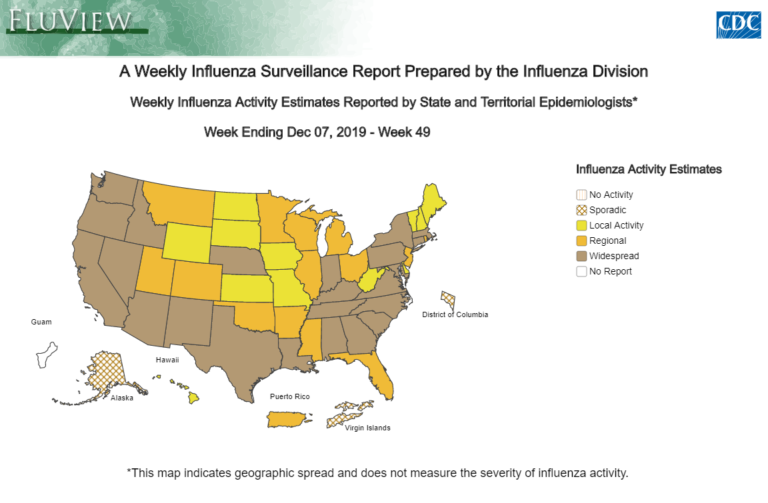What You Should Know About This Year’s Flu Season
Last updated on July 28th, 2022 at 02:25 pm
The holidays come but once a year, and flu season always follows. Activity levels are increasing and expected to continue, which is not unusual as flu typically peaks from December to February. However, there is one reason researchers are scratching their heads. The predominant strain that’s currently circulating is a little less common. Although influenza B viruses can infect anyone, this strain often sickens children and young adults more than seniors, according to the Centers for Disease Control and Prevention (CDC).
So far in December, all regions of our country are seeing elevated levels of flu-like illness with an estimated 2.6 million flu illnesses reported already. Twenty-three states along the West, East, and southern border have experienced widespread flu activity, including Massachusetts, Texas, and Oregon.

Flu comes on abruptly, and symptoms include headache, body aches, fever, chills, and fatigue. If you or your family are traveling to or through one of these active flu regions this holiday season, there are certain precautions you should take to avoid catching this highly contagious illness.
- Proven ways to stop the spread of flu germs are covering your mouth and nose when coughing or sneezing, staying home when you are sick, and washing your hands frequently.
- Adequate sleep, regular exercise, and a nutritious diet rich in vitamins C and E have been shown to keep the immune system strong and healthy.
- Talk to your doctor if you are at risk for complications from flu.
As flu season rages on, keep these tips in mind and head over to the Wellness Center on Oscillo.com to learn about more proactive measures you can take to help ward off flu and other illnesses all year long.
Share article:
Related Articles:

The Importance of Tracking Flu Activity When Illness Is High





2 thoughts on “What You Should Know About This Year’s Flu Season”
This was originally published on December 18, 2019, and was revised on July 28, 2022. What was the revision?
Hi Heather, we apologize for any confusion. Our articles are periodically updated to fix links or pictures.